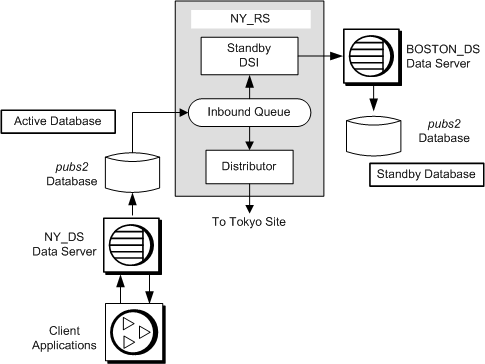In a warm standby application, Replication Server maintains a pair of Adaptive Servers, one of which acts as the backup of the other.
Typically, client applications update the active database while Replication Server maintains the other database as a standby copy of the active database. If the active database fails, or if you need to perform maintenance on the active data server or database, you can switch to the standby database (and back) with little interruption of client applications.
In a warm standby application, you create three connections:
A logical connection that Replication Server maps to the currently active database
A physical connection for the active database
A physical connection for the standby database
The logical database in a warm standby application may, with respect to other databases in the replication system, function as one of the following:
A database that does not participate in replication
A primary database
A replicate database
The procedure in this section demonstrates how to set up a warm standby system for a database that acts as a primary database in a replication system.
Figure 3-8 illustrates a warm standby application operating on the BOSTON_DS data server for a pubs2 database on the NY_DS data server. The database is replicated to TOKYO_DS.
Figure 3-8: Warm standby system

In this scenario the pubs2 database acts as a primary database in a replication environment. The primary pubs2 database for which a standby is created is called the active database.